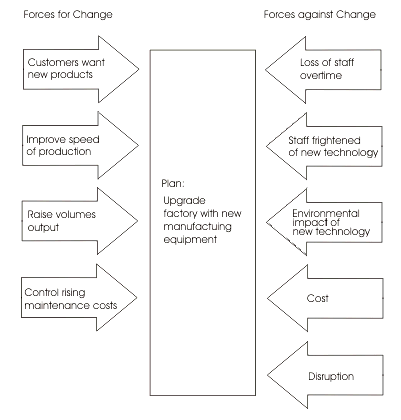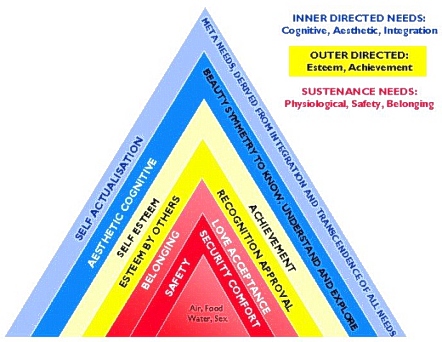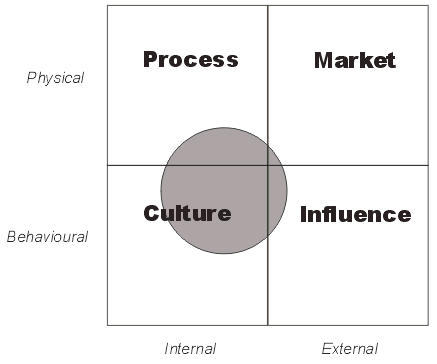It is in human nature to resist change. “We resist change. We choose to keep our habits, rather the comfort of our habits” (Dr. Claude Brodeur PhD, http://members.tripod.com/zenol/humanism.html). Change and the phenomenon of it, is fundamental to evolution; and yet it implies some sort of resistance.
Resistance to change can take various forms and the task of filtering out the cause of resistance can often be difficult. Examples include change in work processes where the needs, expectations, and concerns of individuals are ignored.
Change and resistance to it forms a knock-on-effect to both the construction and destruction of any organisation. Fear is one of the major forms of resistance to change and I shall discuss this in depth at a later stage. Alas resistance to change can be categorised to the organisational level and the individual level. It is these two separate levels which I shall discuss further exploring what steps may be taken to overcome resistance at both the organisational and individual level.
The Organisational Barriers to Change
There are a number of barriers to change at the organisational level that, need to be addressed to allow change to be implemented with the least amount of resistance. These include:
Undefined Goals and Objectives
An organisation should clarify continually the goals and objectives, outlining roles and specifying performance standards.
Financial and Environmental
Lack of working capital in an organisation can prevent it from introducing change that is necessary to stay ahead of competitors or merely survive as a business. In these circumstances redundancies are almost inevitable. The lack of finance could be due to a variety of factors. These include: a fall in market demand, rise in competition or the degree of turbulence in the market place such as the September 11 th World Trade Disaster; which caused a significant effect on businesses and investment world wide.
Lack of Resources and Bad Resource Allocation
Lack of resources is an onset of financial and/or environmental issues as discussed in the above paragraph. Bad resource allocation, occur when managers make bad decisions in allocating resources such as money, time, machinery and staff. Managers should use their imagination to avoid causing conflict situations.
Structural
An organisation that follows the traditional hierarchical structure tends to resist change more than that which has a more flat structure. Communication between head of departments and employees in traditional hierarchical structures are usually poor which causes a rift between Management and Employees.
Insufficient Communication
There are two branches of communication, which are communication internally, within the organisation between Employees and Management and externally between the organisation and suppliers and customers.
In organisations where management keep employees in the dark with respect to change potentially face fierce resistance. Employees may interpret this as a conspiracy against them inevitably leading to an unfriendly atmosphere to work in.
Organisations that fail to communicate with their Customers and Suppliers, changes that are in effect can face disastrous consequences. Example the Tiptree Company that had implemented a £1.5 million warehousing system to handle a larger number of books failed to notify, its customers that it had undergone a radical change without informing it’s customers. Unfortunate for Tiptree, which encountered problems with their new systems for about six months; had tarnished its 1992 British Book Awards Distributor of the Year. (Judy Collins, CRASH 28 th October 2000)
Lack of or Bad Leadership
Strong leadership is required in order to direct the change management process in any organisation. Bad leaders who merely provide are not doing enough to inspire the employees to march ahead. People want to be shown the way.
Lack of Preparation for New Roles
Organisations may lack in their planning phase. Failing to prepare and define the new roles that will need to be satisfied when change is implemented; shall give rise to resistance.
Cultural Issues
The culture of an organisation is a set of “unwritten rules”. Management may have a set of protocols for employees to adhere to perform business processes. The way a task is actually carried out depends namely on the culture. The culture of the organisation can strongly resist to change as employees become too familiar with the current way of doing things.
“Culture is the integrated pattern of human behaviour that includes thought, speech, action, and artefacts and depends on man’s capacity for learning and transmitting knowledge to succeeding generations.”(Webster’s New Collegiate Dictionary)
Individuals Resisting Change
There are a number of barriers to change at the individual level that, need to be addressed to allow change to be implemented with the least amount of resistance. These include:
Fear
News of change can invoke fear among employees. Employees may feel afraid of not being able to fulfil the new proposed changes to work practices that are being imposed. Employees may begin to question the future of their job, which shall cause much discomfort.
People resist change due to anxiety, pessimism and different personal ambitions.
Lack of Input into the change
Individuals tend to resist change where they play not part in change. The idea of not knowing the change can cause a rift between the employees and management.
Overcoming Resistance at Organisational and Individual Level
Organisational Level
Overcoming Undefined Goals and Objectives
Goals and Objectives should be frequently redefined and relayed to all employees. This shall aid towards clearing up any misunderstanding and possible conflicts.
Overcoming Financial and Environmental Issues
Organisations should have a contingency fund to cater for changes in demand or develop a very good relationship with their bank manager in case you need to borrow money at hard times. At the other end of the scale if demand sores suppliers must be able to satisfy demand. Benchmarking suppliers shall help determine your best suppliers.
A good supplier may be one that allows you to have a 30 day or more credit account, which leave you with more working capital. Essentially corporate business strategies should have a degree of flexibility to act as a defence to sudden changes.
Overcoming Structural Problems and Insufficient Communication
In a large organisation employees may wish to elect a spokes person who can act as a collective voice to air potential barriers directly to management. Surveys can be conducted and results analysed. In a small organisation employees should be encouraged to speak up if they feel that change is causing a conflict.
Overcoming Lack of or Bad Leadership
It is a natural human instinct to follow leadership as children we look up to our parents and as adults we look up towards our superiors. Leaders must lead the way and be an example for others to follow. In leading and setting an example to others leaders must take an active role a “hands on approach” side by side with the employees in order to motivate and encourage. As in the words of the great, Mahatma Gandhi; “ We must become the change we want to see”(Mahatma Gandhi, http://www.performance-first.co.uk/organisation/orgmain.htm).
“Visionary leaders, no matter how articulate, are not enough. A shared commitment still requires personal contact to make it real” (Handy, 95)
Overcoming Lack of Preparation for New Roles
The importance of planning must be emphasised and reflected. The new roles should be concisely explained to the respective employees prior to implementing change, to stifle out any doubts, fears or resistance.
Overcoming Cultural Issues
The cultural characteristics once identified need to be overcome and evolved into a non-blame culture. By doing so the employees shall have the freedom to evolve and try innovative ways of doing their jobs without the fear of being penalised for mistakes.
Individual Level
Employees should be directly involved in the change process, which shall motivate and reduce resistance. Extra incentives should be made available to further encourage and reward compliance. Support networks should be established as a means to reinforce the change theory. Appendix 1 Maslow’s Hierarchy of Needs depicts the theory of psychological needs, values of authority, hierarchy and rationality, security needs.
The model consists of many levels. Maslow argues that once the basic level of Air food water and sex are met the next “hierarchical” or “rational” need is for safety. An organisation must concentrate on invoking a sense of “Belonging” to the organisation by keeping them informed, involved and sharing the success.
“Esteem by Others” should be achieved by promoting team work and the occasional appraisals by management.
Force Field Analysis
The force field analysis helps identify the forces for change (drivers) and forces against change (resistance) in an organisation. Through analysis the author concludes that it important to note that even if you have more forces for change than against this may not actually guarantee you successful change. The key is to remove the barriers to change on the organisational and individual level.
Figure 1 Field Force Analysis
Twelve Principles for Managing Change
These principles provide the cause and effect of managing change strategically:
- Thought processes and relationship dynamics are fundamental if change is to be successful.
- Change only happens when each person makes a decision to implement the change.
- People fear change it “happens” to them.
- Given the freedom to do so, people will build quality into their work as a matter of personal pride.
- Traditional organizational systems treat people like children and expect them to act like adults.
- “Truth” is more important during periods of change and uncertainty than “good news.”
- Trust is earned by those who demonstrate consistent behaviour and clearly defined values.
- People who work are capable of doing much more than they are doing.
- The intrinsic rewards of a project are often more important than the material rewards and recognition.
- A clearly defined vision of the end result enables all the people to define the most efficient path for accomplishing the results.
- The more input people have into defining the changes that will affect their work, the more they will take ownership for the results.
- To change the individual, change the system.
Twelve Principles from Managing Change – Change Management Recourse Library (Internet Resource) http://www.lynco.com/12prin.html
Change Agent
Change within an organisation can be achieved by a change agent (an outsider) someone who is not affected by the cultural drawback of the organisation. However there are pros and cons:
Pros:
- Change Agent is unaffected by the organisation’s cultural drawbacks
- Employees might listen to someone who is an outsider simply because he or she is not management.
Cons
- On the other hand employees may reject the new comer as they are not familiar with that particular person. So they may become suspicious as to what his or hers real agenda is.
Closing Argument
Organisations fail to recognise the great importance of their internal cultural situation. Some organisations tend to overlook the cultural issues altogether and concentrate on their technological aspect of change; confident that it will work because we are a successful. Example I mentioned Tiptree earlier who implemented a £1.5 million warehousing system did not realise that the staff were used to working a certain way and did not see any need to alter their ways.
“people had worked in a certain way and did not appreciate the need for a major cultural change” (Marilyn Johnson Tiptree’s Computer Manager) Source (Judy Collins, CRASH 28 th October 2000)
Appendix 2 Illustrates the Change Matrix that reinforces the authors closing argument (Sparrow & Marchinghton, 98).
Appendix 1
Maslow’s Hierarchy of Needs
(Maslow, http://www.insightmc.com/insightmc_surveys2.htm)
Appendix 2
Change Management Matrix
(Sparrow & Marchinghton, 98)
References
- Webster’s New Collegiate Dictionary
- Laurie J Mullins (2002), Management And Organisational Behaviour (Sixth Edition), Pearson Education Limited Pages 812 to 830
Internet:
- Dr. Claude Brodeur PhD, http://members.tripod.com/zenol/humanism.html
- Mahatma Gandhi, http://www.performance-first.co.uk/organisation/orgmain.htm
- Maslow’s Hierarchy of Needs, http://www.insightmc.com/insightmc_surveys2.htm
- Twelve Principles from Managing Change, http://www.lynco.com/12prin.html


